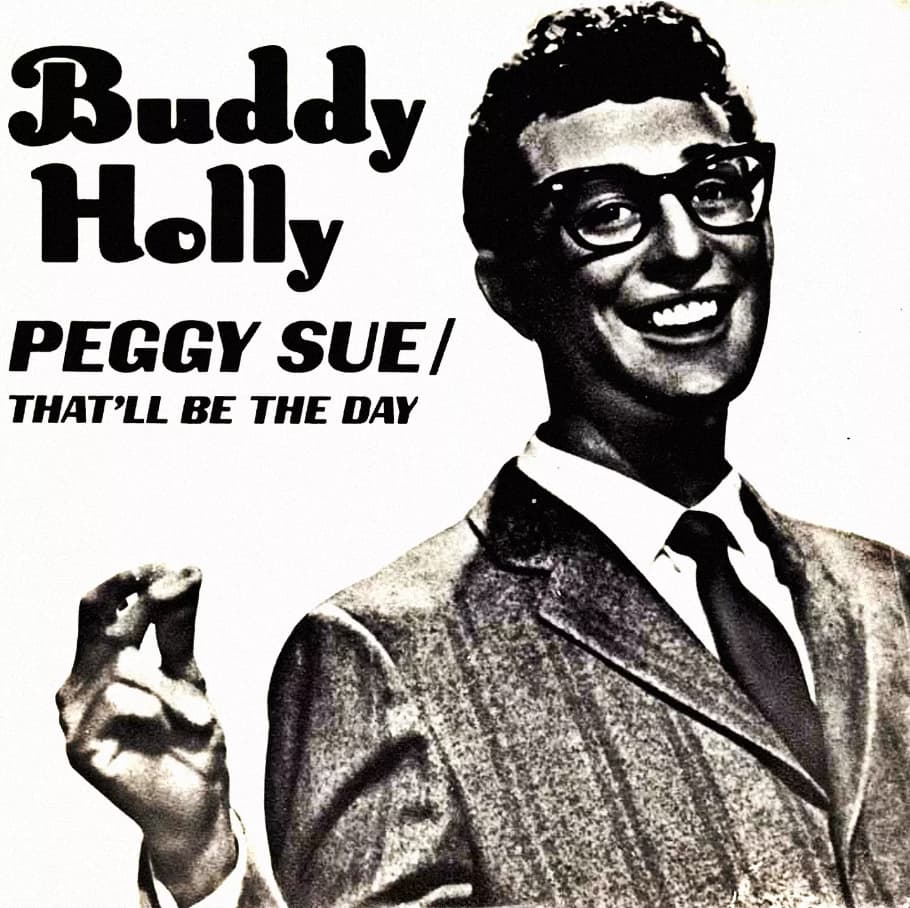
The Timeless Charm of Buddy Holly’s “Peggy Sue”
Released on September 20, 1957, “Peggy Sue” is a classic rock and roll song that remains one of Buddy Holly’s most enduring hits. Written by Jerry Allison and Norman Petty, with significant contributions from Holly himself, this song captures the essence of 1950s rock and roll with its catchy rhythm and memorable lyrics. Although The Crickets are not credited on the single, band members Joe B. Mauldin (string bass) and Jerry Allison (drums) played crucial roles in the recording, which was also featured on Holly’s self-titled 1958 album.
Originally, the song was titled “Cindy Lou”, named after Holly’s niece. However, the title was changed to “Peggy Sue” in honor of Peggy Sue Gerron, the girlfriend and future wife of drummer Jerry Allison. The change came after a temporary breakup between Allison and Gerron, adding a layer of personal sentiment to the track. In her memoir, Whatever Happened to Peggy Sue?, Gerron recounts hearing the song for the first time at a live performance in 1957, describing her feelings of embarrassment and surprise.
“Peggy Sue” stands out not only for its lyrical content but also for its innovative production. Jerry Allison’s drumming, characterized by paradiddles and rhythmic variations, plays a prominent role throughout the song. The real-time engineering techniques used by producer Norman Petty create a dynamic sound that enhances the overall listening experience. This attention to detail in the production process is part of what makes “Peggy Sue” a standout track in Holly’s discography.
Upon its release, “Peggy Sue” quickly climbed the charts, reaching number three on the Billboard Top 100. Its popularity has endured over the decades, earning it a place on Rolling Stone magazine’s 2004 list of the “500 Greatest Songs of All Time” and inclusion in the Grammy Hall of Fame in 1999. The song’s influence is further recognized by the Rock and Roll Hall of Fame, which lists it as one of the “Songs That Shaped Rock and Roll.”
Holly’s talent for storytelling through music is also evident in the sequel, “Peggy Sue Got Married.” Recorded as a demonstration in his New York City apartment in 1958, this follow-up track continues the narrative of Peggy Sue. Although the original version was only released posthumously, with added backing vocals and electric guitar, it remains a testament to Holly’s creative genius.
In summary, “Peggy Sue” is a timeless piece that encapsulates the spirit of early rock and roll. Its combination of heartfelt lyrics, innovative production, and memorable melody has ensured its place in music history. For those who appreciate the roots of rock and roll, “Peggy Sue” is a song that continues to resonate, showcasing Buddy Holly’s lasting impact on the genre.